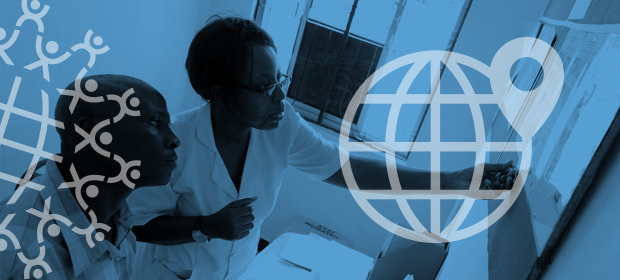Where We Work
See our interactive map


It's time we transform our outdated approach.
Just 20 years ago, we could hardly imagine an AIDS-free generation. And the idea that poor countries would no longer rely on foreign aid to care for their people was inconceivable.
But today, I believe both are in sight.
The entire field of global health and development is shifting. Major funders, such as the U.S. government, are pushing ahead with an approach called localization, wherein countries manage their own foreign aid, mobilize their own public and private revenues, and eventually become self-reliant.
This is what so many of us in nongovernmental organizations (NGOs) have spent our careers working toward. But it will change how we do business.
As NGOs adapt to localization, they can also help transform our outdated model of development and move us toward the goal of universal health coverage, including services that are affordable, accessible and acceptable to all, no matter their social status or where they live.
Today’s development model favors a top-down approach — large global associations identify the big issues, set the global agenda, and pass those priorities down to individual countries (the sustainable development goals are a great example). This approach has brought us incredible progress. In 25 years, we went from a staggering 1.9 billion people living in extreme poverty in 1990 to 731 million in 2015.
But now we’re seeing the limits of this model. I believe it will be far tougher to reach those in need from here on out — the last mile is the most challenging. To be successful, development will have to evolve away from this missionary model, wherein rich countries support poor countries, and into one that’s based on markets, demand for services and countries’ individual contexts.
I’ve found that most low- and middle-income countries today are not directing their own development resources. NGOs can help to change this.
We can use the strong relationships we’ve built over decades with local governments and organizations to serve as trusted advisors, helping them train their staff and build the systems they need — including financial reporting, business development, and measuring results — to manage an influx of aid dollars and mobilize new resources.
Partnerships that allow everyone to play their roles in development will drive the new model we need.
We can also help them build the cross-sectoral partnerships they’ll need to grow their economies, which will mean overcoming deep-seated mistrust.
So often, businesses don’t trust the public sector; governments don’t trust the private sector; citizens don’t trust their governments, and so on. Finding shared values and building partnerships that allow everyone to play their roles in development will help drive the new model we need.
We cannot realistically expect localization to take hold everywhere on the same timeline. For instance, some countries have a critical mass of civil society and private-sector organizations ready to take the lead on development projects, while others don’t.
I’ve found that South Sudan, for example, is very different from Nigeria or Senegal — both of which are already taking on sustainable development challenges such as providing high-quality training for their own local health workers.
But as countries develop at different paces and face their own unique difficulties, intermediation among funders, multilateral and bilateral projects, and country governments will be crucial. NGOs can be the catalysts and intermediaries in these partnerships.
Nationalism and ultranationalism around the world threaten global health and development. It’s also been argued that they serve as a tinderbox for disease.
As The New Republic reports, “Measles cases are multiplying across the globe for the same reason that the international campaign to eradicate polio has stalled, and that Ebola outbreaks continue, and that opportunistic new diseases like Zika take us by surprise: a rise in nationalist politics, which is causing countries to turn inward, harden their borders and distrust outsiders.”
At the same time, donor countries risk reversing decades of global progress and goodwill by turning inward and cutting foreign aid. I believe localization will work when it comes from a shared commitment to shifting the control over development priorities from organizations in donor countries to local ones.
If aid is prematurely or abruptly withdrawn, development is likely to stall.
International NGOs act as ambassadors from our countries to those where we work. We must advocate to our own governments that investments in health and development are investments in global health security and mutual prosperity.
Localization begins with a shift in mindset.
Localization is part of how we as a global community will achieve sustainable development. But it begins with a shift in mindset, a belief that such a goal is possible despite the challenges and the time it will take to overcome them. Here are three steps NGO leaders can take now to help localization happen on our way to universal health coverage:
This post was originally published on Forbes.
Get the latest updates from the blog and eNews




